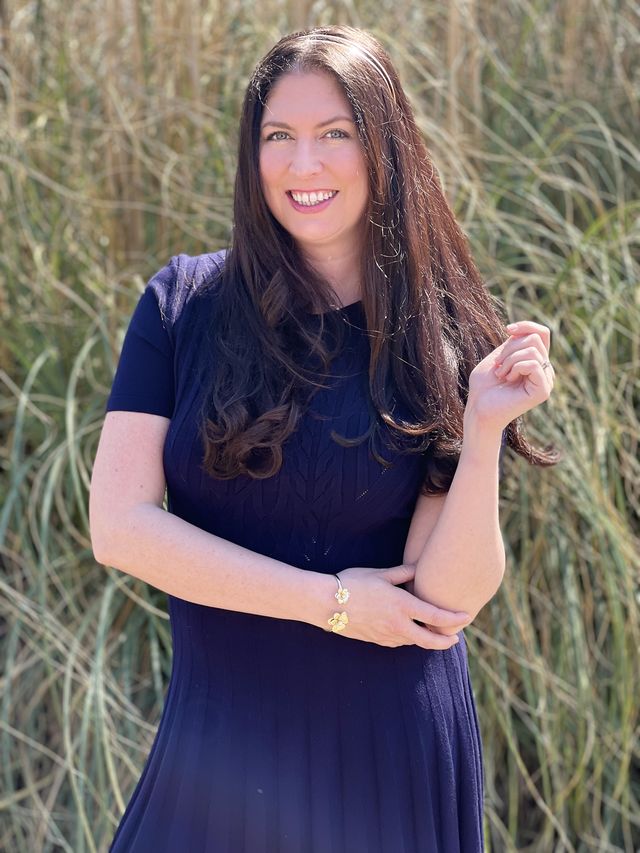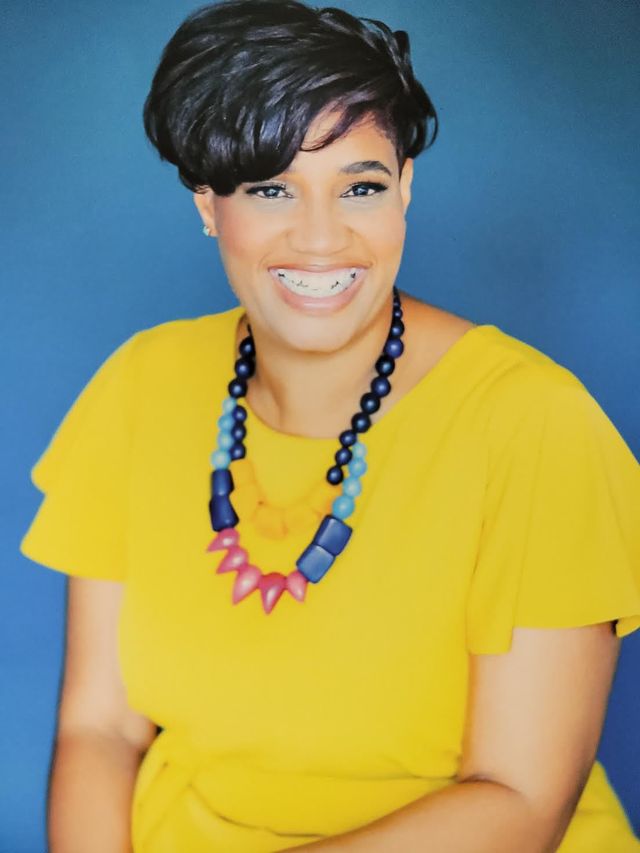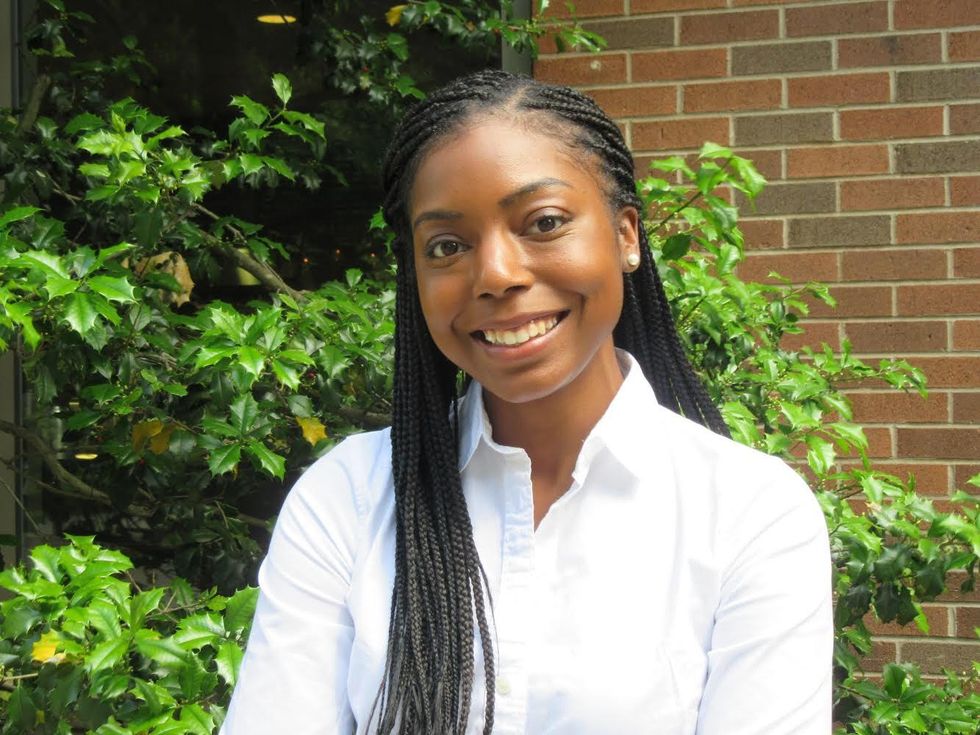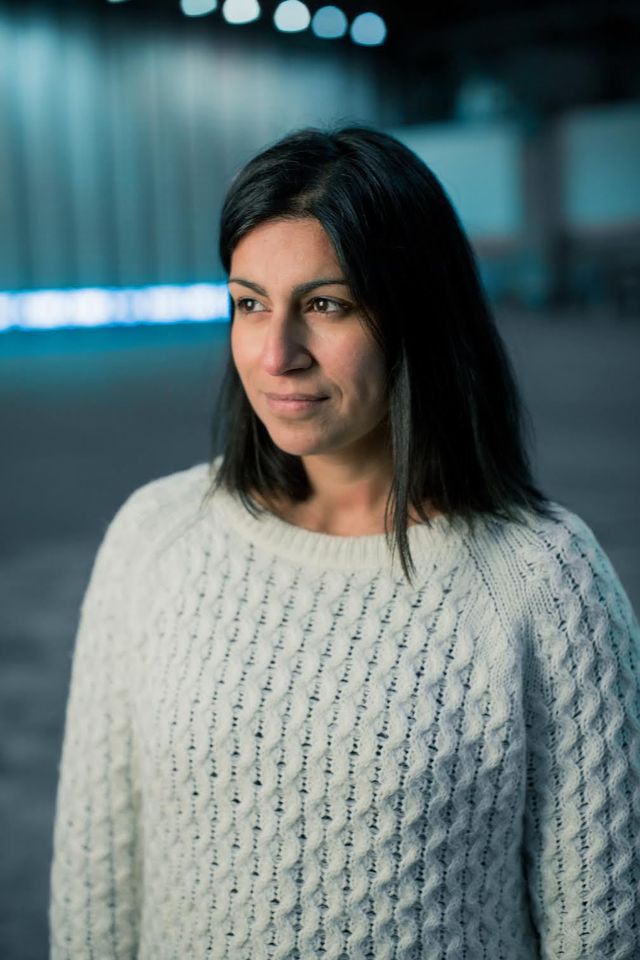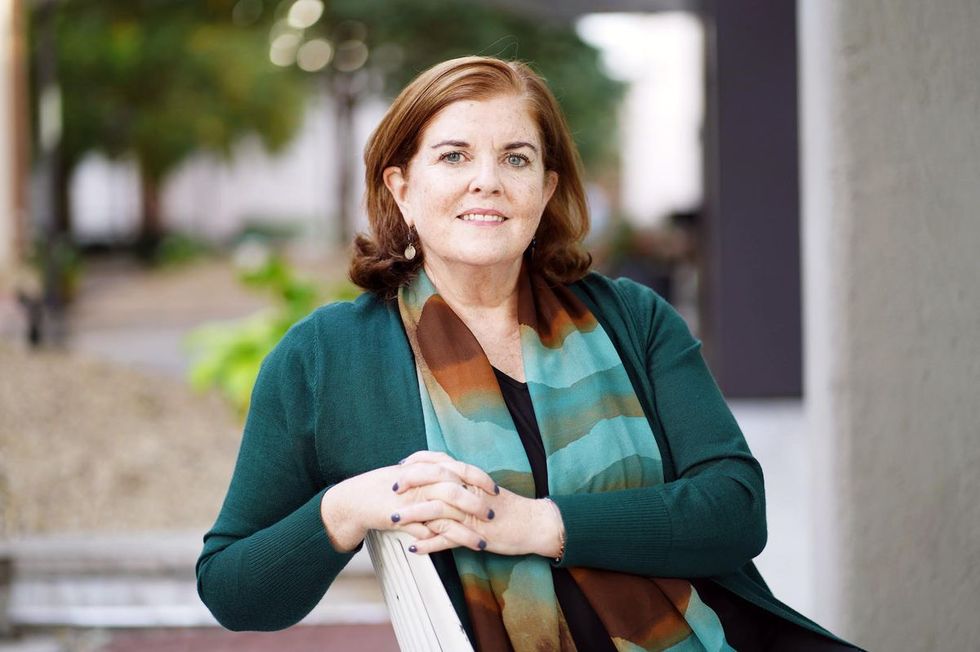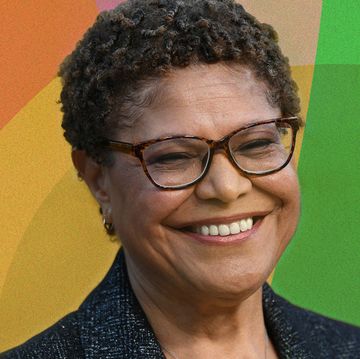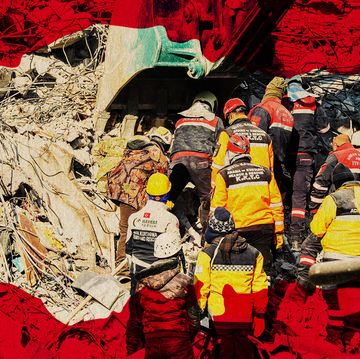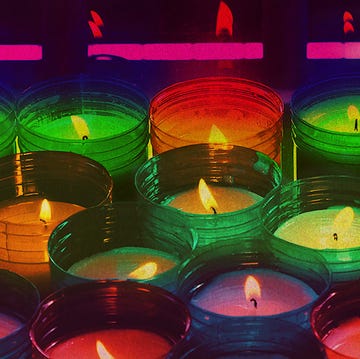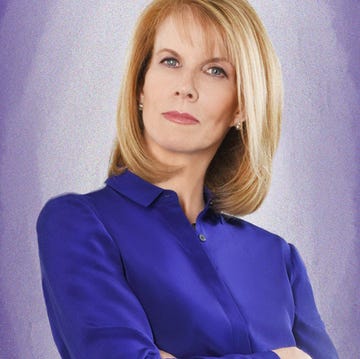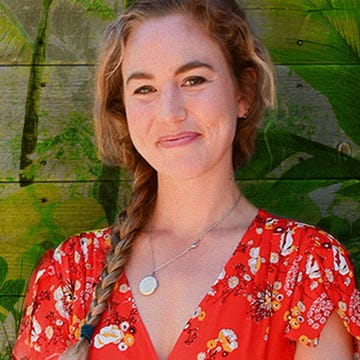The events of the last few years have emphasized that we live in an interconnected society. But it isn’t just Covid tests, supply-chain issues, and gas prices that are sowing division; ultimately, the choices we make as a collective have the ability to ripple out, creating both negative and positive changes, even when you benefit more as a member of society than as a direct recipient.
And now for some good news: As a species, we are genetically hardwired to want to help others, which means that doing your part to spark positive change might be easier than you think. The impulse goes back a long way — the idea of common good, which drives the majority of charities and nonprofits today, is thought to have been introduced by the Greek philosopher Aristotle.
And who doesn’t love making the world a better place? Which is why this month we gathered five women, in very different fields, who share one common goal: to make the world better for as many people as possible.
Alessandra Ferrara-Miller, founder of All for Lunch
Alessandra Ferrara-Miller loves being actively involved with her young children’s lives. However, even her time in the classroom didn’t prepare her for how unfair the system can be for children in need.
“I heard a story on the news about a little boy in elementary school coming home with a stamp on his hand saying he had no lunch money and being denied a school lunch,” Ferrara-Miller says. “I got very emotional thinking about it because, you know, it’s elementary school, so they could have been in kindergarten. They could have been the same age as my daughter, who, at that point, didn’t even know what money was, and to not be able to get lunch with her peers … it’s a concept she couldn’t even understand, something that’s definitely out of her control.”
It was that emotional moment that was the driving factor behind All for Lunch. Its goal is simple: to eliminate student lunch debt by working with school districts to create individual solutions. Currently, some children have been forced to go without food, are offered an “alternate” cheese sandwich instead of what everyone else is eating, or even work during their lunch hour to offset the cost of the meal, all practices Ferrara-Miller would like to see abolished. And while All for Lunch is funded exclusively through donations, 100 percent of which go back into Atlanta-area schools, Ferrara-Miller is optimistic that it’ll be able to widen its impact even further.
“Over the last few years, we had Maine and California enact free lunch for all,” she says. “So, it shows that it’s possible states can do it. And then with the federal funding, it shows that, hey, this really didn’t hurt too much, you know, to support it. So, you know, two states have done it. Hopefully as we move forward, that ball keeps rolling because as people were hearing about it, it started the same conversation — people didn’t even realize this was a thing.”
Why it’s an ongoing issue
“What I didn’t expect to really realize when I first started trying to tackle this issue of school-lunch debt was when you hear the story of “oh, the school’s lunch debt has been paid off,” which sounds amazing, but then you see that that’s just a really quick Band-Aid fix. You are taking that debt off their plate, but they still don’t have the funds to buy lunch. So, while you can keep paying off the debt, they still can’t get out of that cycle and move forward. Right before Covid hit, our big initiative that we were starting to do was establishing All for Lunch reserve accounts at schools. So, we would pay off the lunch debt and then fund a reserve account so that if a child ever gets through the line [without funds], the child was never even aware that they’re getting this service. So, they’re never going into debt, they still have access to the meals, and they’re not receiving the alternate meal or completely denied a meal altogether.”
How kids have gotten involved
“I’ve been a Girl Scout troop leader since my kids were in kindergarten. And one of the little girls in my troop sent out her birthday invite, and a gift option was to donate to All for Lunch so that kids can have meals. I just thought it was so sweet to see the little children that I’m around all the time are starting to care more and more about their environment just because they’re so exposed to me talking about it. We’ve also been pivoting to try to identify the schools where the kids still carry lunch debt, and then also support food pantries in low-income areas so that we’re stocking those with breakfast and lunch items as well. So that way, the kids who are still digital learning or on holidays still have access to those essential items. Whenever it’s a local pantry or something, my daughter is all about ‘Can I go do the shopping in the drop-off?’ She loves it. It really did inspire her to care a little more about what’s going on around her and recognize privilege in her own life.”
What’s next
“The national free-lunch program, which was amazing, does expire in June. … A lot of school districts across the country went and took some of that money they were getting for funding and paid off lunch debt, which was great. So, we’ve been working over the last year while lunch has been free to identify the school districts that still have debt and getting those reconciled before the school year, when debt will start back. My goal for the upcoming spring and summer is to work to establish these reserve accounts at the schools before school even starts. So from day one, we don’t have any kids going into debt. We don’t have any big corporate sponsors; it’s individuals that really care about their community and want to do a little bit here and there to help make sure that these kids can keep going. So, the big, overall picture is getting those reserve accounts set up and really hoping to expand our donor base and community reach to communities across the country so that we can continue to serve schools in different areas.”
Yashika Okon, program manager at Everybody Wins DC
From her time as a sociology major at Howard University through her stint in AmeriCorps, Yashika Okon knew she had a passion for both teaching and nonprofits. Which is why she was delighted to find her interests intersect when she began working with Everybody Wins in Washington, D.C. Formed in 1995, the organization was originally a way to match mentors with students for one-on-one reading sessions. Since then, it’s evolved to include lunchtime reading, book drives, and, even during the pandemic, virtual options. And as Okon, now a program manager, explains, it’s become a rare job where she can put all her skill sets to use.
“It absolutely translated perfectly,” she says. “I did not feel like I missed a beat with reaching students as well as families, because that was really important to me. You know, we have everything that we use to support our students and our families. But I really love and enjoy the students. That is really what keeps me grounded and what keeps me coming to work every single day.”
Making reading a family project
“With the new version of our program, we can interact with parents to see exactly what they would like to see their children reading, and how they want our program to maybe change in the future. But we also have the community version. And so, we work with community partners in the District of Columbia as well. When we have our book projects and our book drives and all those types of things, we get to see whole families. Families come out, so we’ll get to see grandparents who are maybe raising their grandkids, brothers, and sisters from pre-K [and] up.”
Why it’s about more than just reading
“We work with students to match them with an adult mentor to read with them. We are virtual, and so we use the Epic book platform. It’s then up to the mentor and the students who have conversations with each other to figure out what they both are interested in so that they can engage positively in a book. And so, while we encourage the reading, we also encourage the building of that relationship. We certainly encourage other conversations besides just reading a book because life happens, and if the students just don’t want to just read a book that day, that’s okay. Just have a conversation with your mentor.”
How reading affects a kid’s entire life
“It certainly opens up a child’s view. The actual books might not be so important. If we can get a child to love any book, that will help encourage their love of reading. … Diary of a Wimpy Kid, years ago, that was the biggest book on every kid’s list. But if a kid tells me, ‘Give me this book,’ and that will draw them into other aspects of reading, it might mean they want to read a little bit more in school, and then school becomes interesting. They just have to figure out what it is that they enjoy. And so, if we can get that joy of reading from a book that we provide them, we know that that will help encourage your child to read in other areas of their life.”
Ambar Johnson, program director of LivableStreets Alliance
As a student in civil engineering, Ambar Johnson loved the puzzle that came with plotting out all the elements of how transportation infrastructure is created. However, as someone who has lived in many places along the East Coast — and never owned a car — the technical discussions lacked the humanity she had experienced as a person interacting with the streets of her city.
“How you move around is really shaped by infrastructure or lack thereof,” Johnson says. “Everyone has to negotiate those things. And I thought that was really interesting, because I had no idea that’s what people do. I had no idea that bus routes were aligned in a particular way with the schedules and all the planning behind it. They were just completely invisible to me. I was like a fish who was asking what water was like, when it’s literally all around you.”
Ultimately, it was the human side of the equation that led Johnson to LivableStreets. The alliance, located in Boston, works to transform the area by creating safety on public streets — which can mean anything from equitable transportation options to discussions on the roles of policing and prosecution, to green spaces that don’t displace neighborhoods in the name of ecology. Because ultimately, feeling safe on your own city streets allows everyone to move forward.
What we gain as a society when streets are safe
“Most people drive by themselves, traveling faster than the people around them who are using active transportation options. When in a metal bubble traveling at higher speeds, you’re literally disconnected from the people and the environment around you. Most people are concerned about getting from point A to point B in the fastest way possible to meet their obligations. There are many consequences to being late in our society! Which impacts the safety of others, in and out of cars. However, when you travel slower, you have more awareness of those who are around you. It would be great to have more time to not rush, but to take more time to take in your environment, widen the periphery of your tunnel vision, and connect with the people, places, environments, and histories around us. In a world where our streets are safe and livable, people are not using streets as corridors to swiftly move through but as a place where people linger, without repercussions of design or policy, to enjoy the people and places around them.”
Why it isn’t just enough to “green” our streets
“It’s important to have green infrastructure like trees and permeable pavements that strengthen climate resiliency and local ecologies. We need to ensure our streets are as close to nature as possible. We need to ensure we design and build our green streets in a way that rectifies missed opportunities for safe, accessible mobility options of the past to ensure we have a long-term, sustainable impact that provides safe and abundant mobility options across ages and reinforces climate resiliency across multiple fronts. It’s also incredibly important that people, neighborhoods, and the environment are able to stay in place to enjoy these benefits. To ensure communities are not pushed out and that local ecologies are unharmed in the process of greening streets, it’s incredibly important that municipalities, agencies, and policymakers work with neighbors, activists, and advocates to ensure transportation, land use, and housing policies are woven together for the benefit of those who are historically most susceptible to environmental racism, climate change, and inequitable policies.”
What affected her the most
“In the digital world we live in, there are constant demands on our time and schedules. So, for me, I take pride in making time to sit at the feet of my elders to archive their stories, listen to and learn about their lives, and ask them about their experiences. Our elders are a wealth of information, they know things Google doesn’t, and I’m so thankful to make the time to spend time with them while they are here. It’s important. Everything that I’ve achieved thus far is a direct reflection of the investment my family, friends, coaches, and mentors have poured into me. They’ve been the models of embodied social impact, community care, and stewardship that I turn to every day. Though I am my own person, I would be remiss to say my accomplishments are solely my own. It’s truly been a team effort.”
Angie Bual, creative director of PoliNations
This year between March and October, the United Kingdom will experience Unboxed. The one-of-a-kind government celebration is made up of 10 large-scale art projects pushing forward ideas in science, technology, engineering, the arts, and mathematics designed to create a larger-than-life experience. But for Angie Bual, the creative director of PoliNations, which will create surreal urban forests in Edinburgh and Birmingham, the idea of art as a form of social good isn’t a new concept. Whether it’s creating an app that creates playlists and personal messages for people in the hospital or constructing large-scale theater and art with the Trigger Stuff collective, she’s seen art’s power to create connections.
“I’m interested more in the audience than I am the art form,” Bual says. “I have to make art for a reason. And I think there’s a bit of reticence against art taking on the role of social care, social housing, social good because of the public funding that we received, but for me, I think [making] art out of all types of things [is] great. But for me personally, I’m driven by issues and driven by frustration. I’m driven by trying to solve a problem. And that’s how I come up with the ideas that we create.”
On the idea behind PoliNations
“Design, theater, music — really what the visual installation does is it creates this enormous umbrella and venues that make you go ‘wow.’ But really, it’s about those little plants and finding out that 80 percent of plants in your non-British garden are non-native. And that’s a conservative estimate. Everything has traveled, these tiny seeds. We see the same journeys in the media at this moment. We see immigrants coming now; this is a current or present so-called problem. Actually, it’s also ancient, and it has to do with colonialism and empire.”
On bringing people together with a dragon
“What I’m interested in doing is getting people to be authentically themselves while being part of an arts event. And a good example of that is for The Hatchling. You might traditionally ask everybody to come in and be part of a community choir. And I just think, if you’re not part of the community choir at that point in your life, I’m not gonna try and convince you to be in the arts. [When it came to The Hatchling], there was this great guy called Derek who owns a boat company. And I said, ‘Derek, how about you fly the dragon off the back of your boat away from the cliff?’ And his eyes just lit up. And he said, ‘If I can do anything, I can do that.’ And so, he got to be his authentic self and do something that literally never happened before. And when he took his boat out into the sunset, and flew the dragon, and finally came back into the harbor, there was a group of people from the general public who were out watching, and cheered and handed him a beer.”
On the power of making people say “wow”
“What would it be like for everyone to experience theater in a really real way, and in a space that you’re comfortable with? A place I can get coffee rather than walking into a big theater that I might not feel comfortable with. It just provides so much animating within a city. With the dragon, the amount of aspiration that it gave to young people, where they said, ‘Well, if we can do that, we can do anything.’ We involve so many young people in that journey. And with the forest combinations [of PoliNations], it’s springing up in the middle of an urban city. I really hope that that gives people the catalyst to think that we can transform these urban spaces, to think that what we can bring to our environments can be quite radical. And so, just seeing something by just walking out your door as being absolutely different, and animated, exciting, magical, and imaginative, it just brings a smile to people’s faces as well. We talk to each other when there’s a hurricane or there’s a big, big problem. But when do we get to talk to our neighbors and people about something that was just absolutely extraordinary and mind-blowing?”
Sheila Davis, chief executive officer of Partners in Health
Sheila Davis has been a nurse for more than 35 years. But it was joining up with Partners in Health in 2010, and eventually going on to serve as the organization’s chief executive officer, that allowed her focus to shift globally. As she describes it, becoming an advocate for HIV and AIDS care in the 1980s opened her eyes to the inequality in health care, and working with PIH has given her the tools she needs to advocate for health care. And while the Covid pandemic has highlighted outstanding inequalities within our interconnected society, Davis insists that there are still plenty of reasons to remain hopeful that things can change.
“We can provide quality health care equitably around the world by looking at what is the best model for people getting the right care,” she says. “I think there’s a lot of optimism that can be out there, but I think it’s going to take us thinking differently and creatively and with innovation.”
Why health care needs to be addressed
“Everybody around the world should have access to quality health care. That is something that everyone should be fighting for, even if it’s not in their own backyard. The best way to do that is to build long-term systems regardless of whether it’s having a baby, or a child with childhood illnesses, or women with breast cancer, or pervasive mental-health challenges around the whole world. We do it by building not just the health system, but also the educational system to ensure that people have the ability to learn and provide health care and stay in the countries in which they live in their community. … I think it’s important for people to raise their awareness of what’s happening around them. There’s so many disparities that are happening in the U.S. Even in Boston, how come the rates of asthma or the rates of maternal mortality are so much higher three miles away? I think people become more inquisitive.”
How PIH takes a holistic approach to building health care in other countries
“We’ve developed a 10-year strategic plan in really trying to transform global health equity by demonstrating models in places that have been written off for decades, if not longer, and showing that quality health care can happen. The goal is to not be in hundreds of countries. The goal is to do what we do well and challenge the status quo that says, ‘Maternal mortality is inevitable in Sierra Leone.’ So, we’re building a maternal Center of Excellence in Sierra Leone, which is part of our response after we went to Sierra Leone and Liberia in 2014 to fight Ebola. Because there is a moral imperative to fight Ebola. But Ebola was a symptom of a broken health-care system. So, while we were fighting Ebola, just similar to how when we were responding to the original earthquake in Haiti, we also started building and strengthening by working with the government to improve the health system. And then, we stayed there when 99 percent of every other organization left. We stay to work with these governments, to build and make these health systems be something that can care for people, to make resilient health systems so that when there is a natural disaster, or an infectious disease or pandemic, there is a stronger health system, and they’re going to be able to survive.”
How Covid has changed the conversation
“Medications for HIV were available in the U.S. and Europe [long] before they were available in other parts of the world. And we see that with Covid vaccines in the U.S. and Europe and Canada. We’ve had access to Covid vaccines now for quite a while. And still, there’s no access globally. As a global citizen, our moral imperative is that the vaccine should have been distributed to those who were in the most need initially, which was health-care providers, the elderly, and those at risk. My hope is that Covid does raise some awareness that we’re all interconnected. And I think infectious diseases should do that, because we are a global world where people are moving around. I think like we saw in HIV and Ebola, though, unfortunately people focus very much on just protection and shutting down borders. We should really be looking at this as a global community because that’s going to keep us safer.”
Laura Studarus is a Los Angeles-based travel writer with bylines at Fast Company, BBC Travel, and Thrillist. Sometimes she can go several hours without a cup of tea. Follow her adventures on Twitter.
Get Shondaland directly in your inbox: SUBSCRIBE TODAY

